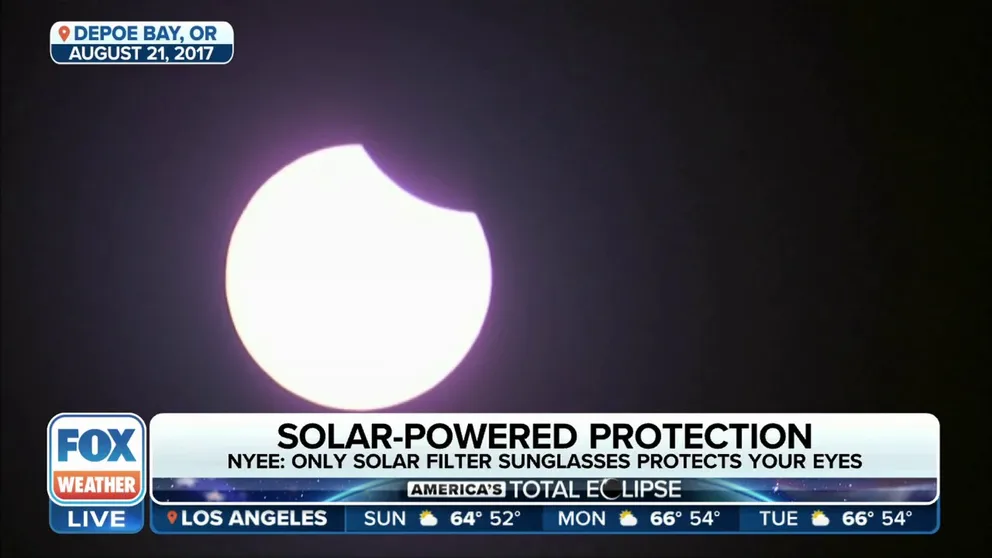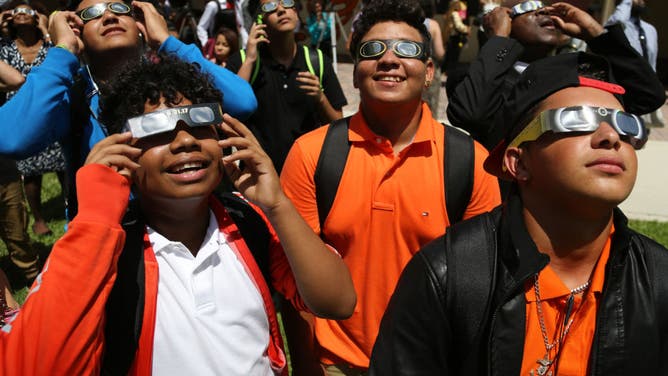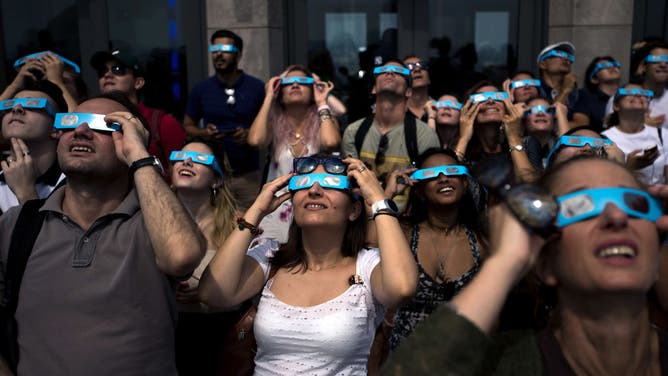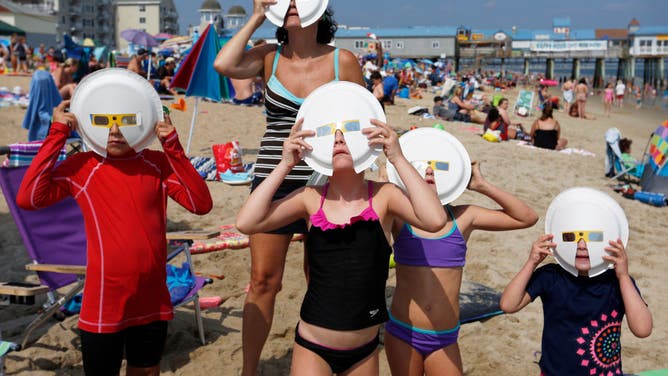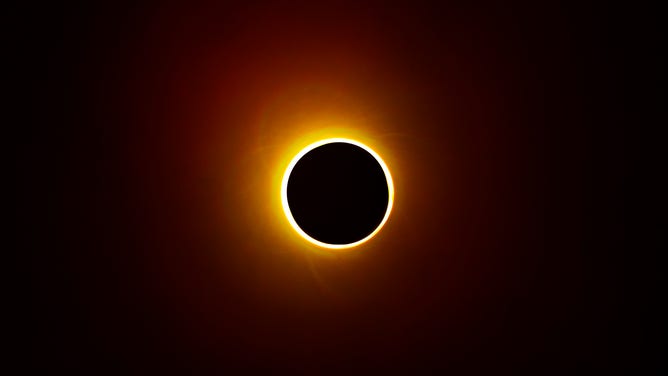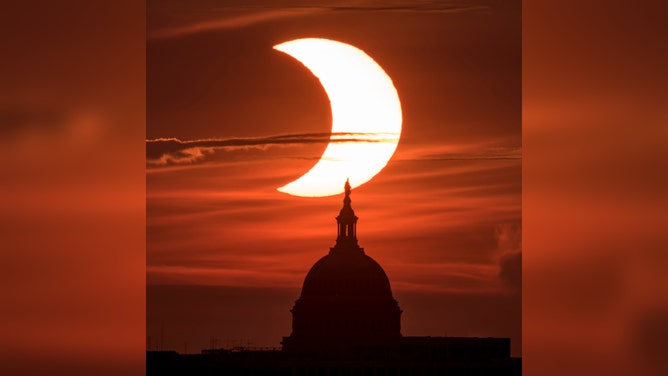How to safely watch a solar eclipse
During the total solar eclipse in April 2024 you can remove your eye protection only during totality, when the Sun is entirely covered.
Eye protection is a must when it comes to viewing April's total solar eclipse
If you’re among the millions of people who will get the chance to witness April’s total solar eclipse, you’re going to want to use eye protection. Vitreoretinal surgeon at New York Eye and Ear Infirmary of Mount Sinai Dr. Avnish Deobhakta joined FOX Weather on Sunday to explain the dangers of viewing the eclipse without proper eye protection.
With a total solar eclipse happening across a large part of the U.S. in April 2024, it's time to prepare to look at the Sun – with proper eye protection or filters.
To safely view the 2024 total solar eclipse, you'll need glasses with solar filters, sometimes known as eclipse glasses.
On April 8, 2024, a total solar eclipse will be visible from Texas to Maine. A total solar eclipse happens when the Moon passes between the Sun and the Earth, completely blocking the Sun's face for several minutes. When the Sun is covered completely, known as totality, it is safe to remove your eclipse glasses when the Sun is covered by the Moon. The glasses must go back on before the partial eclipse resumes and part of the Sun is visible again.
Removing your glasses only applies if you are located along the path of totality in 2024. Most of the U.S. will see a partial solar eclipse but only a 115-mile-wide path will see the full eclipse. Check this solar eclipse map to see if you are along the path of totality for the 2024 total solar eclipse.
Read on to find out where to get your eclipse glasses and what to know before you view a solar eclipse.
What kind of glasses do I need to watch a solar eclipse?
It is only safe to look directly at the Sun while wearing special-purpose solar filter glasses. These glasses need to meet the ISO 12312-2 international standard for direct Sun viewing, according to the American Astronomical Society.
Regular sunglasses are not safe for viewing any partial or annular eclipse because sunglasses allow more sunlight than is safe for your eyes.
NASA PICKS 5 EXPERIMENTS TO FUND THAT WILL STUDY 2024 TOTAL ECLIPSE IN US
What to look for before buying eclipse glasses?
Using the AAS safe supplier list is one way to ensure you are getting eclipse glasses or a solar filter that meets the ISO 12312-2 safety standard.
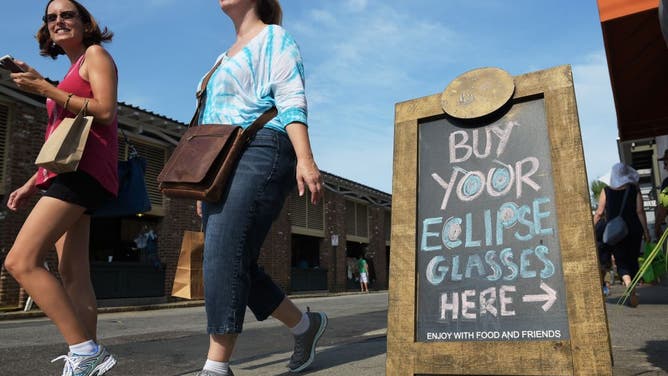
A board advertises eclipse glasses for sale at a restaurant ahead of the total solar eclipse in Charleston, South Carolina, on August 20, 2017. (Photo credit should read MANDEL NGAN/AFP via Getty Images)
(Getty Images)
Amazon and other online bargain sites aren't on the list, according to the AAS, because during the August 2017 Great American Eclipse, those sites hosted sellers with glasses that had "not been properly tested and shown to be safe."
If you do use Amazon, eBay or other sites to purchase glasses, check that the seller is identified and listed on the page, according to the AAS.
COUNTDOWN IS ON FOR THE GREAT NORTH AMERICAN SOLAR ECLIPSE
Some big box stores sell ISO-compliant eclipse glasses while supplies last, including Home Depot, Lowes and Walmart, according to the AAS.
Once you have your glasses, inspect the film for any scratches or wrinkled lenses. Do not use the glasses if they are damaged or the solar filters are loose from their frames.
Do eclipse glasses expire?
Eclipse glasses that meet the ISO certification standard and were made after 2015 do not expire, which is good news if you still have yours from the 2017 total solar eclipse.
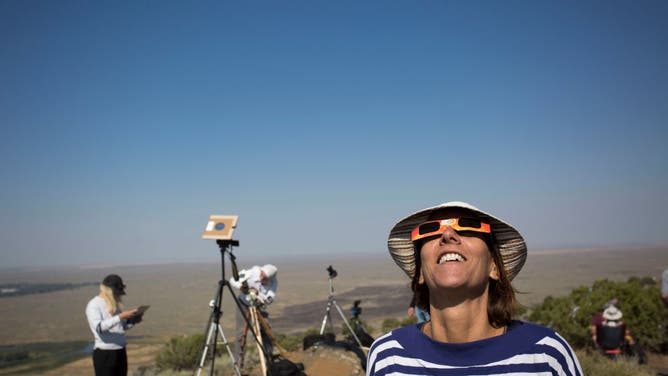
File photo: Locals and travelers from around the world gather on Menan Butte to watch the eclipse on August 21, 2017 in Menan, Idaho. (Photo by Natalie Behring/Getty Images)
(Getty Images)
Be sure to examine the solar filters before wearing the glasses to make sure they aren't damaged and safe to use.
After the eclipse event, store your glasses at room temperature in a container to protect them from scratches, according to the AAS.
Can I use welding glasses or a helmet?
The National Parks Service is preparing for both the annular and total solar eclipses, which will cover many national parks across the U.S. In a list of frequently asked questions, the NPS addressed different options for eclipse glasses, including welding glasses.
No. 14 or darker welding glass is safe to view the eclipse, according to experts. However, those may need to be ordered online, and anything less than a No. 14 is too light.
WHERE TO SEE 'RING OF FIRE' IN UTAH DURING OCTOBER ANNULAR SOLAR ECLIPSE
It is also not safe to view the Sun through a piece of mylar from a balloon or a straw hat, according to the NPS FAQs.
How to safely photograph a solar eclipse
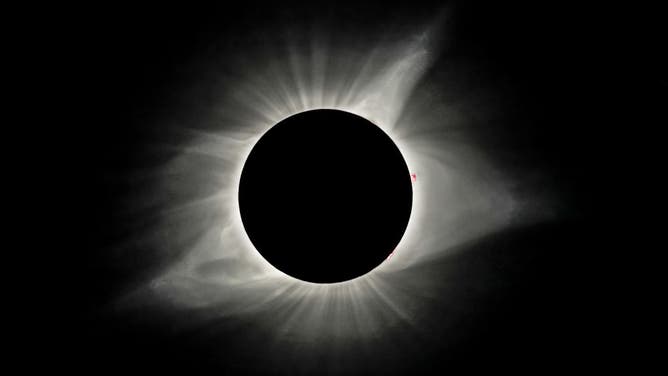
The sun's corona is visible as the moon obscures the sun during the Great American Solar Eclipse at Madras High School in Madras, Oregon, on Monday, August 21, 2017. (Photo By Carlos Avila Gonzalez/The San Francisco Chronicle via Getty Images)
Just like your eyes, your camera also needs protection from the intense sunlight. Special-purpose solar filters must be on cameras and telescopes during all partial and annular eclipse phases. During a total solar eclipse, you can remove the filter during totality.
The filter must be attached to the front of your camera lens, not the eyepiece. According to the AAS, if the filter is attached to the eyepiece, the sunlight is too concentrated and will burn through it.
It is unsafe to look through an unfiltered camera during a partial eclipse.
